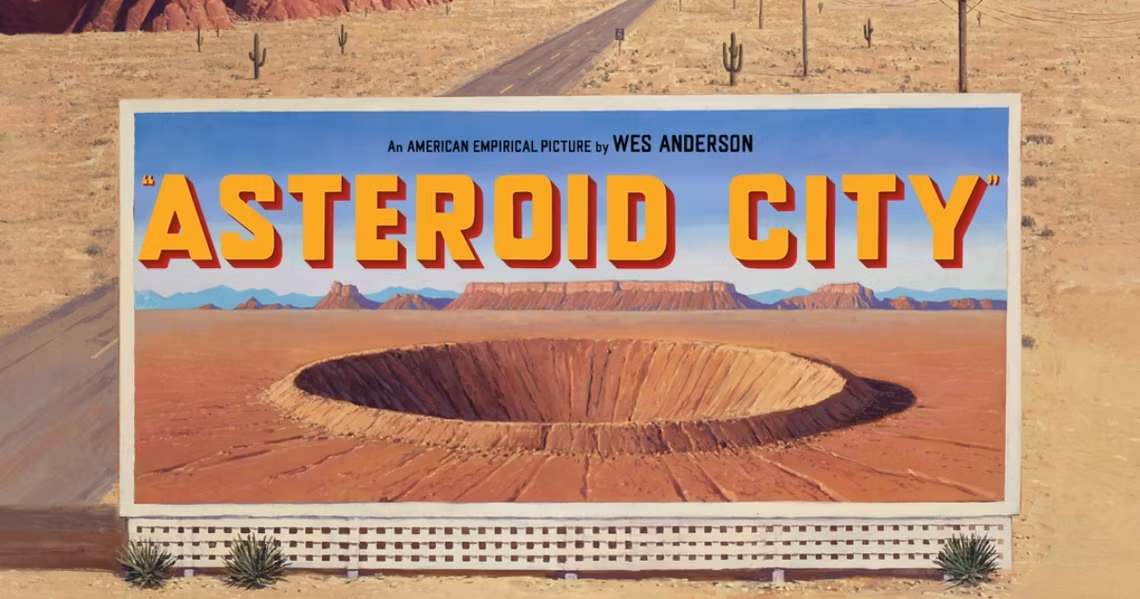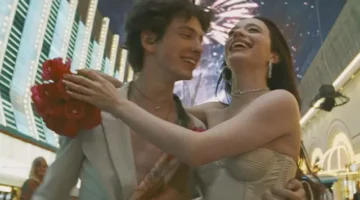Tropic Sprockets / Asteroid City
By Ian Brockway
 In what is most like a cross between Bugs Bunny and a cartoon in The New Yorker Magazine, the rascally Wes Anderson is at it again with “Asteroid City,” a hybrid of a spoof and a time capsule of the 1950s.
In what is most like a cross between Bugs Bunny and a cartoon in The New Yorker Magazine, the rascally Wes Anderson is at it again with “Asteroid City,” a hybrid of a spoof and a time capsule of the 1950s.
A group of eccentric characters inhabit Asteroid City so named because of the landing of an asteroid some five thousand years ago in the southwest.
The plot is relatively simple: various people gather and collect space age weapons, talking philosophy, UFOs, and religion.
At least that is an initial impression. The film is actually a play within a play written by Conrad Earp (Edward Norton).
A family comes into a diner with three kids who are driven to practice magic. The family car has stalled. An icy dad (Jason Schwartzman) attempts to handle things, but all he really wants is to take pictures with his camera.
Scarlett Johansson is an actor in the motel.
Tom Hanks appears on the scene as a grandfather and Tilda Swinton is the scientist.
Throughout the film, “Alien Fever” takes hold of the town with everyone going crazy about UFOs.
One is best served to just let the hijinks unfold much as a cartoon. The film can be seen as a kind of mediation on quarantine lockdowns due to Covid. The film is also a catalogue of our wishes and nostalgia for the fifties and its space age trappings.
Nostalgia is king.
There is a wondrous black-and-white sequence that recalls Janet Leigh in “Psycho” or Kim Novak in “Vertigo.” Scarlett Johansson is seen in a voluptuous swirl of silver blonde hair.
The film is exquisitely visual. It is a Pop-Up book filled with our collective American dreams, liquid in its smoothness, bright colorful and bold. This is a James Rosenquist painting in motion, an actual painted desert in candied fire.
While the rapid dialogue might be over one’s head, as it sometimes is over mine, Wes Anderson is a master of form. He creates a rich tapestry that unfolds upon the eye like a Far Side cartoon by Gary Larsen.
While his offhand nonchalant humor is an acquired taste, he is an auteur and his imagery is studied and careful, glossed with verve with a reverence for the cinematic image.
Anderson is at his best here, as both a collector and a commentator of what it means to be steeped in Americana, excited about the Atomic Age. Was it something to hold on to and value. Or was it only a passing event of generational hypnosis, a nationwide fugue?
Write Ian at [email protected]
[livemarket market_name="KONK Life LiveMarket" limit=3 category=“” show_signup=0 show_more=0]





No Comment